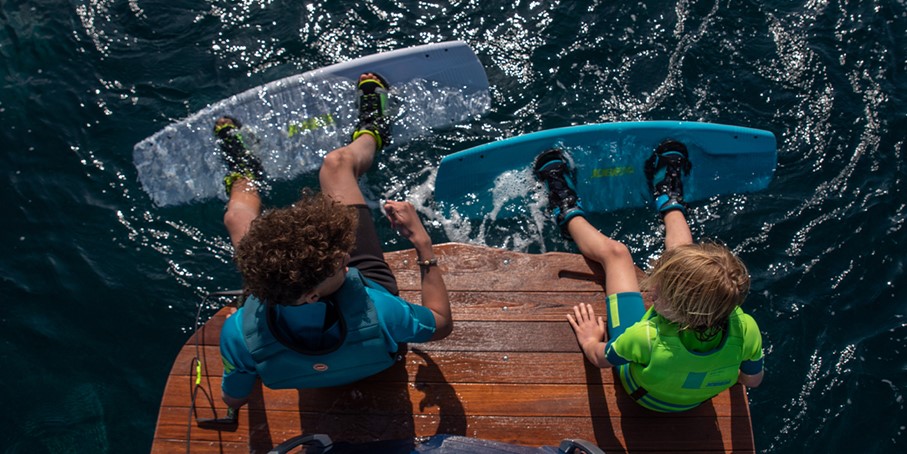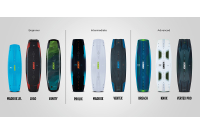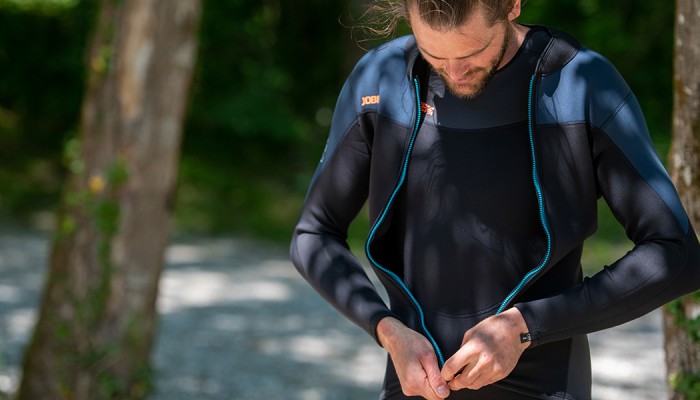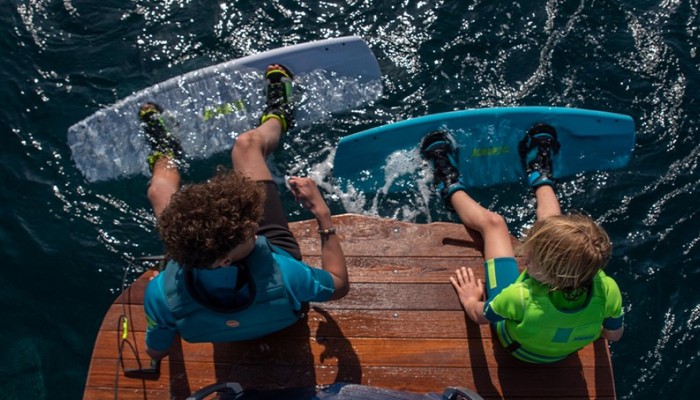ULTIMATE WAKEBOARDING GUIDE
Wakeboarding: The Ultimate Guide (2023)
Wakeboarding is a super fun and exciting water sport that combines elements of snowboarding, surfing, and water skiing. It involves riding a small board while being towed behind a boat at high speeds. As the boat pulls you along, you can carve and jump through the boat's wake, performing tricks and stunts along the way.
One of the coolest things about wakeboarding is that it's incredibly versatile - you can do it on just about any body of water that's big enough to accommodate a boat. Whether you're out on a calm lake, a narrow canal, or a wide river, there's always a new challenge to be found.
But beware: wakeboarding can be a bit addictive! Once you get the hang of it, you'll find yourself wanting to spend every free moment out on the water, trying out new tricks and pushing your limits. So, if you're looking for a thrilling new adventure that's sure to get your adrenaline pumping, give wakeboarding a try!

How to wakeboard?
To wakeboard, you will need a few things, including a wakeboard, a boat, and a life jacket. Once you have all of the necessary equipment, follow these steps:
1. While on the dock, place your board on the water and make sure to get the bindings wet to help get your foot in.
2. Step into the board with one foot slightly forward and the other on the back of the board.
3. Which foot you want to have on the front and back depends on your own personal preference, so give it a try! Though for most it works well to have their dominant foot on the back. Quick tip for those that don’t know which foot their dominant foot is, ask one of your friends to give you a small nudge in the back and see which leg you step forward with.
4. Once you are in the water, hold the handle with both hands and let the boat driver slowly tow you forward. Keep your knees bend and your hands forward and try slowly to get up. Once you get up, you can let the boat driver take you to your preferred speed.
5. Once you are moving, bend your knees and lean back slightly to help maintain your balance.
6. To steer, push either your heel or the edge of your toes of the board in the water and lean in that direction to steer the board
7. Once you feel comfortable, try doing some basic tricks, such as jumping, grabbing or even spinning.
Remember to always wear a life jacket and safety helmet and follow all safety guidelines when wakeboarding. Have fun!
What kind of boat do I need?
1. Preparing the boat:
- Almost any boat is able to tow a wakeboarder, although there are some guidelines which you should follow. Firstly, the tow rope needs to go through an attachment point at the back of the boat. With an inboard engine, you can attach the tow rope pretty much anywhere on the back-half of the boat. With an outboard engine, you need to keep in mind that the rope, board and rider always need to steer clear from the engine, more specifically, the propellor. In order to stay safe, riders can attach a bridle to the back left and back right of the boat, leading to a point in the middle where to towing rope can be attached. As for engine size, as long as the boat has enough power to keep the rider standing, you’re good to go.
2. Determining the Speed:
- The optimal speed for wakeboarding typically ranges between 18 to 24 miles per hour (29 to 39 kilometers per hour). However, the specific speed may vary depending on the rider's preference, skill level, and the boat's wake shape.
- Experiment with different speeds to find the sweet spot that allows the rider to maintain control and perform tricks while enjoying a good-sized wake.
3. Safety Practices:
- Always wear a properly fitted, ISO-certified life vest when wakeboarding. Safety should be the top priority.
- Ensure the boat's driver and spotter are experienced and knowledgeable about towing water sports and understand hand signals for communication with the rider.
- Establish hand signals for communication between the rider and the boat's occupants. Clear communication is crucial to ensure everyone's safety. For example, once the boarder has fallen, a simple thumbs up can show the people on the boat that the boarder is fine and not in need of an emergency pick-up.
- Before towing a rider, make sure the area is clear of any obstacles, such as rocks, buoys, or other boats. Maintain a safe distance from shorelines, docks, and swimming areas.
4. Etiquette and Consideration:
- Be mindful of other boaters, swimmers, and water sports enthusiasts.
- Observe local boating regulations and laws. Understand the right of way, no-wake zones, and speed limits enforced in your area.
- Respect the environment by properly disposing of trash and avoiding the release of pollutants or contaminants into the water.






